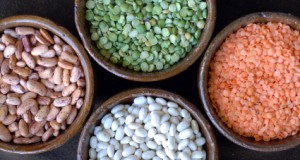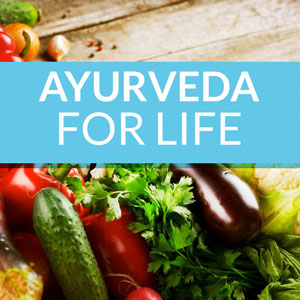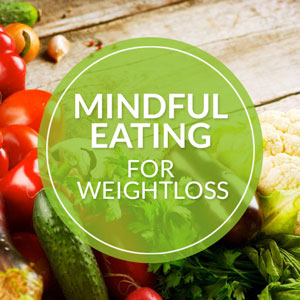What You Need to Know About Protein
Proteins 101
You must’ve heard it from your trainer, read in every magazine, and saw multiple experts talk about the importance of consuming enough protein for a healthy and slim body. It seems that without sufficient amount of protein our body’s metabolism slows down, energy level drops, weightloss becomes impossible, and we turn into weaklings. Protein is an essential nutrient that plays a key role in how our bodies function. Protein provides building blocks for body tissue, and can also serve as a fuel source.
For proteins to be used by the body they need to be metabolized into their simplest form, amino acids. There are twenty total amino acids, but of those twenty only nine are essential. In other words, only nine of the twenty cannot be produced by the human body itself. Therefore, these nine are the only amino acids that you must absorb through your diet or nutritional supplements. When you consume protein, it is broken down into amino acids and absorbed using these enzymes, which make it possible to use the proteins from your food for the things your body needs them for. Typically, all dietary animal protein sources are considered to be complete proteins. That is, a protein that contains all of the essential amino acids. Proteins from vegetable sources are incomplete in that they are generally lacking one or two essential amino acids. It doesn’t mean that you can’t get enough good quality protein on a vegan or vegetarian diet, though. You just need to make sure that you get a variety of seeds, nuts, lentils, beans, and good-quality grains such as quinoa, buckwheat and amaranth.
How much protein do you need?
RDI (Recommended Daily Intake) for protein are from .36 – .45 grams of protein per pound of body weight, or about 15-20% of calories. That is between 46-60 grams/day. The exact number will depend on your body weight and activity level. Physical activity and exertion as well as enhanced muscular mass increase the need for protein. Requirements are also greater during childhood for growth and development, during pregnancy or when breast-feeding in order to nourish a baby, or when the body needs to recover from malnutrition or trauma or after an operation.
It is important to remember that the weight of food does not equal protein weight. For example, if you weigh a chicken breast and the total is 140 grams it doesn’t mean you are getting 140 grams of protein. 140 grams of chicken contains about 43 grams of protein with the rest being primarily water.
Different proteins have different levels of biological availability (BA) to the human body. Many methods have been introduced to measure protein utilization and retention rates in humans. They include biological value, net protein utilization, and PDCAAS (Protein Digestibility Corrected Amino Acids Score) which was developed by the FDA. These methods examine which proteins are most efficiently used by the body. Biological value (BV) is a measure of the proportion of absorbed protein from a food which becomes incorporated into the proteins of the organism’s body. Protein bioavailability has much to do with the type and relative amounts of amino acids present in a particular protein molecule. Protein digestibility ratings usually involve measuring how the body can efficiently utilize dietary sources of protein. Typically, vegetable protein sources do not score as high in ratings of biological value, net protein utilization, PDCAAS, and protein efficiency ratio as animal proteins.
Various protein sources offer different protein usability value. For example spirulina and chlorella average 75-80% usable protein. Yellow pea and rice protein are close to 85-90% usable protein.
Beyond bioavailability, we need to consider factors such as allergies and digestive problems. It doesn’t matter how ‘good’ a protein is on paper if you can’t digest it and if it gives you gas, bloating, and constipation.
Is your protein CLEAN enough to eat?
Clean protein is harder to pass by than you might think. Pesticides, heavy metals, and antibiotics are abundant almost in all factory produced non-organic meat, poultry, fish, dairy, and eggs. Fast food joints pump almost all of their items with food flavorings and chemicals to increase shelf life. To avoid all the negative health effects, go for organic nuts and seeds, lentils, eggs, grass-fed, humanely-raised poultry and meats, wild fish, non-genetically modified soy, and organic cage-free eggs. Make friends with farmers at the closest farmer’s market, read food labels at the stores, and ask questions at the restaurants. You deserve to know where your food is coming from.
Sources of clean protein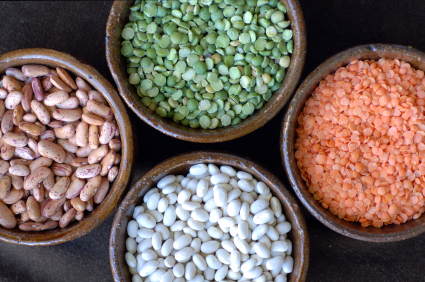
1. Algae and Spirulina – Spirulina is one of the great super foods. It is approximately 65 to 71 percent complete protein in its natural state. This is higher than virtually any other unprocessed food. And unlike most other forms of protein, the protein in spirulina is 85-95% digestible. Since spirulina has no cellulose in its cell walls, it is extremely easy for the body to break it down. In fact, its amino acids are delivered to the body for almost instant absorption. While spirulina is great, make sure it is collected from a clean body of water, not public lakes that allow boats. It also can’t serve as a main source of protein since it would be hard to take it sufficient qualities to make up for body’s demand for protein. It can be a great supplement to a healthy diet.
2. Hemp seeds – 65% of the total protein content of hemp seed comes from the globular protein edestin, which is easily digested, absorbed, and utilized by the human body. It is also hypoallergenic. Hemp contains about 30% protein.
3. Almonds – strongly anti-inflammatory, good source for healthy fats, fiber, and protein. To make almonds easier to digest, soak them overnight and peel the skins. Nuts are not a complete protein since they don’t have a full range of amino acids but serve as a great addition to a healthy diet.
4. Chia seeds – this miracle food offers complete protein that is mildly anti-inflammatory, easy to digest, and easy t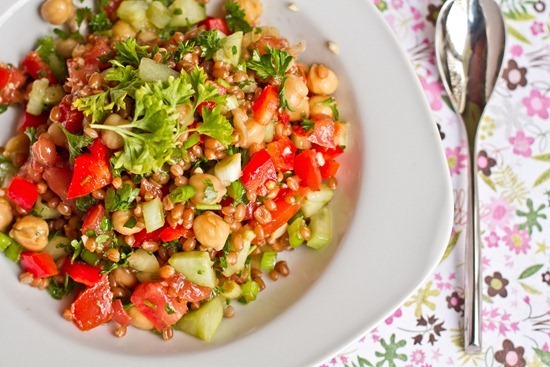 o cook with. They are a good source of calcium and phosphorus, and a very good source of dietary fiber and manganese. Chia seed pudding can be a great easy-to-make breakfast option or a healthy fiber and protein rich snack.
o cook with. They are a good source of calcium and phosphorus, and a very good source of dietary fiber and manganese. Chia seed pudding can be a great easy-to-make breakfast option or a healthy fiber and protein rich snack.
5. Wild fish – while most nutritionists would say that fish is healthy, not all fish is equal. The origin matters a lot. Farmed fish is the same as a caged chicken. They are not fed a natural diet, often sick, and don’t have as much desirable Omega 3’s, might be full of antibiotics and dioxin. Wild is the way to go if you consume fish on a regular basis. Healthy fat in fish is very beneficial to the body
6. Cage free eggs – Eggs are a rich source of thiamine, riboflavin, pantothenic acid, folic acids, vitamin B12, biotin, vitamin D, vitamin E, and phosphorus. Eggs can be a great easy-to-digest food if chickens had a healthy diet, were cage-free, and got to run around outside. Whole eggs are also much more nutrient dense than egg whites since egg yolks contain all of the vitamins, minerals, antioxidants, and Omega-3 fatty acids. Buy whole organic eggs, not mechanically separated chemically-altered egg whites.
7. Quinoa – (pronounced “keen-wah”) is a “complete protein” grain. It tastes great and easy to cook even for kitchen newbies. Buckwhea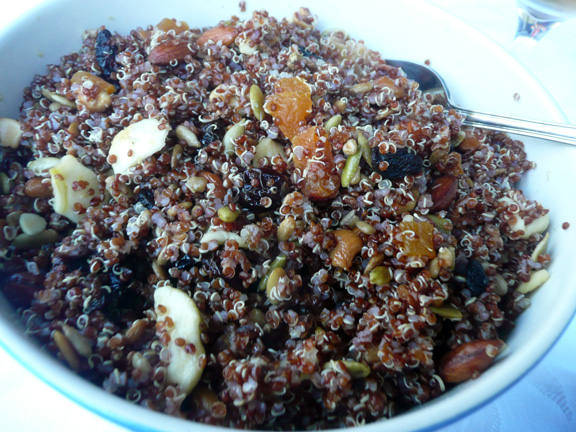 t is another grain (seed) that is a complete protein and can be substituted for quinoa.
t is another grain (seed) that is a complete protein and can be substituted for quinoa.
8. Lentils – while not a complete protein, lentils are a great source of amino acids, healthy carbs, and filling fiber. When combined with grains they form a complete protein. They will keep hunger at bay and are easier to digest than larger beans.
9. Cottage cheese and plain greek style yogurt – if you are not sensitive to dairy, plain cottage cheese and greek yogurt can be a good addition to a balanced diet. Both are pretty low in sugar, have a good amount of protein, and healthy fats. Choose organic to avoid hormones, chemicals, and hidden antibiotics. According to the National Institute of Diabetes and Digestive and Kidney Diseases (NIDDK) 30 to 50 million Americans are lactose intolerant. These are people who cannot digest lactose, the sugar found in dairy products. If you have any of the intolerance symptoms, it is best to do an elimination diet or get blood work done at a qualified center.
10. Tempeh – Tempeh is made out of fermented soy and can be a great source of clean protein for vegans if they don’t have soy sensitivity. Make sure it is organic and not genetically modified. It’s been shown that soy protein is comparable in digestibility to other high-quality protein sources such as meat, milk, fish, and egg. According to Darryn Willoughby, Ph.D. an associate professor of exercise physiology at Texas Christian University, he states that “soy protein’s powerful anti-oxidant capabilities provide significant health and anti-cancer benefits. This is probably due to the presence of isoflavones, saponins, phytic acid, and protease inhibitors. Avoid processed ‘fake’ soy meats and do not over-rely on soy to avoid developing a food sensitivity.
11. Organic Chicken – Chicken is perhaps the single most consumed dietary protein. Chicken contains all of the essential amino acids. Choose chickens that were raised in humane conditions, fed a variable nutrient dense diet, and got to see sunshine, not just a sad cage. It makes a difference in taste and its effects on the body.
12. Grass-Fed Beef – Beef contains all of the essential amino acids. Beef is loaded with zinc and iron as well. If you consume meat, make it grass-fed, not grain-fed. It is cleaner, more flavorful, safer, and with more nutrients.
13. Rice and Pea protein powder – the combination of rice and pea protein actually provides one of the best tasting protein concent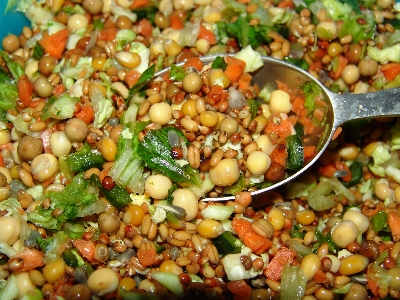 rates available. The end product is 80-90% pure, hypoallergenic, easily digested protein. Plant Fusion is one of my favorites as it tastes great and is easily digestible.
rates available. The end product is 80-90% pure, hypoallergenic, easily digested protein. Plant Fusion is one of my favorites as it tastes great and is easily digestible.
15. Whey powder – Whey protein is the second most abundant protein derived from milk (casein is the most abundant milk protein). It’s found mainly in meal-replacement powders, protein powders, and ready-to-drinks. Whey contains all of the essential amino acids and is particularly high in the branched-chain amino acids (leucine, isoleucine, and valine) and glutamine (an immune-boosting amino acid). Make sure it is grass-fed, organic, and hormone free. I really like Raw Organic Whey
When choosing your preferred source of protein consider your taste preferences, the origin of protein, and pay attention to the way your body reacts to it. That is if you have digestion issues, lentils and beans might be too harsh for your digestion. If you have problems digesting fats, nuts, seeds, and fatty meats will cause discomfort, fatigue, and other unpleasant symptoms. With dairy sensitivity becoming more and more prevalent, yogurts, milk, and cheeses might be out of reach for many people. Everyone’s body is unique and while some people might feel best on vegan sources or protein, some will thrive on paleo lifestyle. Choose your proteins mindfully, with a help of a nutritionist or a GI specialist and don’t judge others. Your responsibility is to take the best care that you can of your body and be compassionate to those who choose another way.
If you need help with resolving digestion issues or understanding your body, learn more about working with me 1-1.
Your turn: what are your favorite sources of protein?

